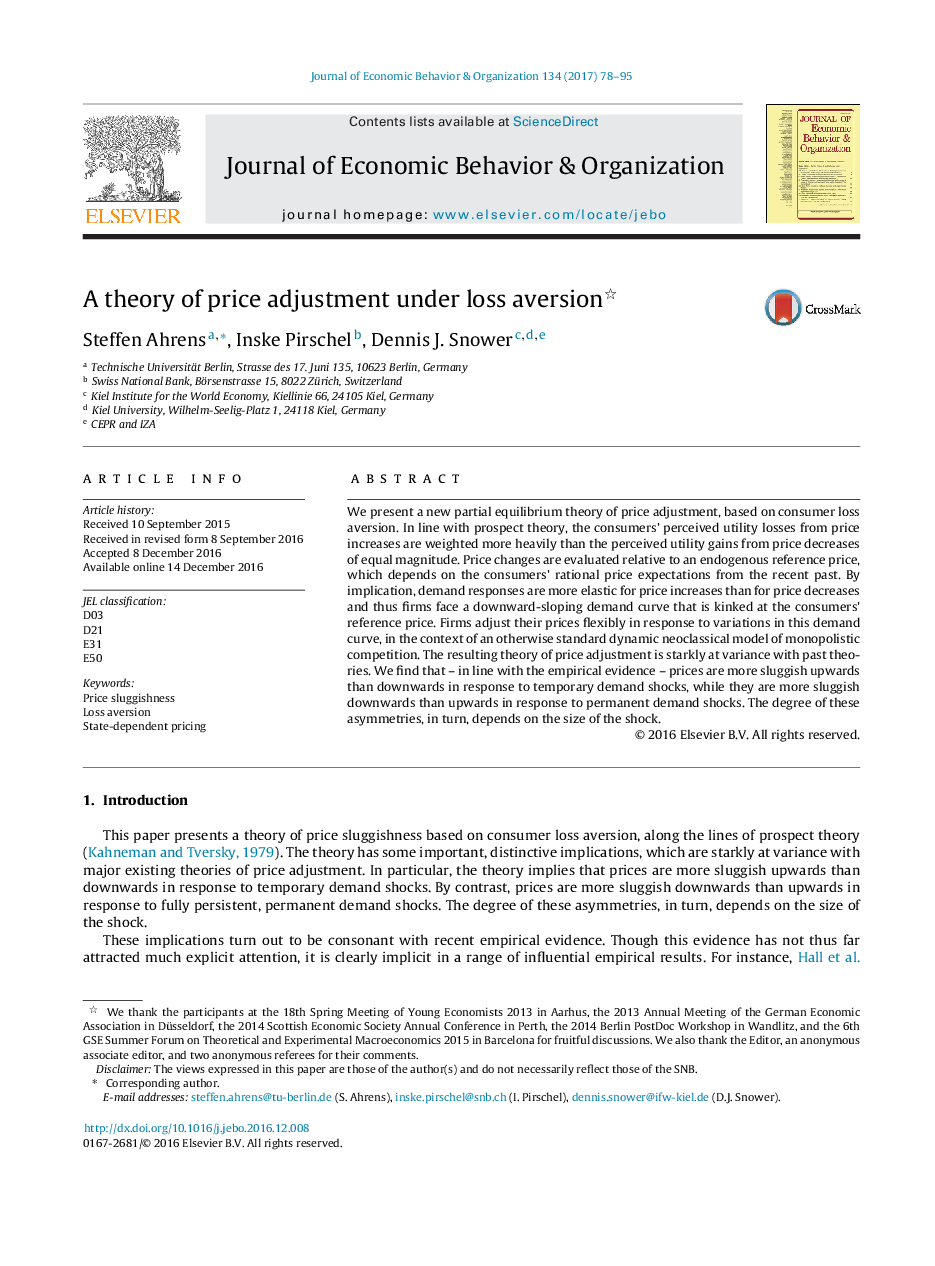| کد مقاله | کد نشریه | سال انتشار | مقاله انگلیسی | نسخه تمام متن |
|---|---|---|---|---|
| 5034656 | 1471633 | 2017 | 18 صفحه PDF | دانلود رایگان |

- We present a new theory of price adjustment, based on consumer loss aversion.
- Reference points are endogenous and determined by past rational expectations.
- Firms set prices flexibly, accounting for their influence on future reference points.
- For temporary demand shocks, prices are more sluggish upwards than downwards.
- For permanent demand shocks, prices are more sluggish downwards than upwards.
We present a new partial equilibrium theory of price adjustment, based on consumer loss aversion. In line with prospect theory, the consumers' perceived utility losses from price increases are weighted more heavily than the perceived utility gains from price decreases of equal magnitude. Price changes are evaluated relative to an endogenous reference price, which depends on the consumers' rational price expectations from the recent past. By implication, demand responses are more elastic for price increases than for price decreases and thus firms face a downward-sloping demand curve that is kinked at the consumers' reference price. Firms adjust their prices flexibly in response to variations in this demand curve, in the context of an otherwise standard dynamic neoclassical model of monopolistic competition. The resulting theory of price adjustment is starkly at variance with past theories. We find that - in line with the empirical evidence - prices are more sluggish upwards than downwards in response to temporary demand shocks, while they are more sluggish downwards than upwards in response to permanent demand shocks. The degree of these asymmetries, in turn, depends on the size of the shock.
Journal: Journal of Economic Behavior & Organization - Volume 134, February 2017, Pages 78-95